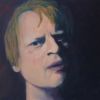8 Philosophy of Art Books That Reshape Your Perspective
Discover Philosophy of Art Books endorsed by Paul Bloom, Sean Carroll, and Shaun McNiff, offering expert insights for your journey



What if you could uncover the hidden forces shaping how we experience art, from the games we play to the photographs we consume? Philosophy of art isn't just about paintings in galleries; it probes the very nature of creativity, expression, and cultural meaning, influencing everything from therapy to digital media.
Experts like Paul Bloom, a psychologist focused on human nature, and Sean Carroll, a physicist with a keen eye for cultural phenomena, have pointed to works such as Games by C. Thi Nguyen that challenge traditional aesthetics by exploring agency and motivation in art. Meanwhile, Shaun McNiff and Sherri Irvin bring decades of experience in expressive arts therapy and social justice philosophy, guiding readers through accessible yet profound treatments of aesthetics and creativity.
These eight carefully selected Philosophy of Art books offer well-rounded perspectives, combining foundational theories with contemporary insights. While these expert-curated works provide proven frameworks, you might consider creating a personalized Philosophy of Art book that tailors these ideas to your background, interests, and learning goals for a truly unique experience.
Recommended by Paul Bloom
Psychologist studying human nature and morality
“After listening to @add_hawk's fascinating podcast with @ezraklein, I bought his book, "Games: Agency As Art". It's a wonderful read, with rich insights about games and life, but all I'm thinking now is that he goes to better parties than I do.” (from X)
by C. Thi Nguyen··You?
by C. Thi Nguyen··You?
C. Thi Nguyen, a philosophy professor at the University of Utah with a background spanning social structures and agency, delves into games as a unique art form that operates through agency rather than traditional aesthetics. You’ll explore how games temporarily invert motivations, encouraging you to pursue goals for the pure experience of struggle itself, a concept he unpacks by linking aesthetics with practical reasoning. The book also reveals how games function as a communication technology, shaping our autonomy by presenting new forms of agency. If you’re interested in how games inform human behavior and cultural expression, this will deepen your understanding in ways few philosophy of art books do.
Recommended by Publishers Weekly
“The need for critical works such as this one―learned, discerning and refreshingly open-minded―is perhaps greater than ever.”
by Arthur C. Danto··You?
by Arthur C. Danto··You?
Arthur C. Danto, a longtime philosophy professor and art critic, developed a provocative thesis declaring that art "ended" in the 1960s with the rise of Pop art, radically shifting how we understand contemporary creativity. In this book, you explore how traditional art history narratives, like those traced from Vasari's Renaissance framework, no longer apply, and why conventional aesthetics fail in explaining today's art, ranging from visual puns mimicking Rembrandt to Warhol's Brillo Box. You gain insight into a posthistorical approach to art criticism, which accommodates the boundless possibilities of contemporary art, including its rejection of linear progress and fixed meanings. This book suits anyone intrigued by how philosophy intersects with modern and postmodern artistic movements and criticism.
by TailoredRead AI·
This tailored book explores the intricate concepts of agency and motivation within the philosophy of art, providing a focused journey through key ideas that shape artistic creation and interpretation. It examines how artists’ intentions and viewers’ experiences intertwine, revealing the dynamic forces that drive artistic expression. By aligning with your background and interests, this personalized guide delves into philosophical debates about autonomy, creativity, and the role of motivation in art, offering a unique lens to understand art’s power and significance. Through a curated synthesis of complex theories, it matches your learning goals, making challenging content accessible and relevant to your perspective.
Recommended by Shaun McNiff
Author and professor at Lesley University
“From my close perspective on Stephen K. Levine's work over the past four decades, I applaud Philosophy of Expressive Arts Therapy and its 'integration' of a lifework of poiesis (making). This volume includes seminal essays on trauma, imagination, and beauty together with new and timely writings on identity and relationships with China and East Asia. I have always admired Levine's unique and dogged affirmation of the productive role of breaking to make anew, described here as 'unintegration', and its vital place in creative expression. I am struck by how he so clearly connects this alchemical process to our common commitment to the classical Chinese emphasis of creating ourselves through artistic expression. Among the book's many achievements is the insistence that the creation of a person, a community, and a world is ongoing, never finished and always transcending fixed identities; it is a process where beauty is the 'presence' of engagements with each other and the life we make, now.”
by Levine··You?
by Levine··You?
Stephen K. Levine, a professor emeritus with decades of experience in expressive arts therapy, wrote this book to explore the philosophical roots of art-making as a vital human response. You’ll find an in-depth look at poiesis—the creative act of making—and how it transcends therapy to touch ethics, politics, and social change. The chapters delve into Taoism, improvisation, and creativity’s role in human existence, enriched with personal stories and poetry that invite reflection. This book suits those eager to grasp how art shapes identity and community beyond clinical psychology.
Recommended by Sherri Irvin
Philosophy professor and social justice scholar
“Darren Hudson Hick's Introduction to Aesthetics and the Philosophy of Art offers a fresh, engaging take on both central and historically neglected topics in aesthetics. Hick presents complex debates in an accessible way and brings thinkers from different traditions and historical moments seamlessly into conversation. Examples from a wide variety of art forms keep the discussion lively while drawing out the implications of the theories on offer.”
by Darren Hudson Hick··You?
by Darren Hudson Hick··You?
When Darren Hudson Hick decided to write this book, he aimed to make the complex debates of aesthetics and art philosophy approachable without sacrificing depth. You’ll explore questions that challenge what art really is—like whether mass-produced objects can qualify as art or how taste factors into aesthetic judgment, with concrete examples ranging from Duchamp's urinal to pop culture references like The Exorcist. Hick’s conversational style guides you through these ideas chapter by chapter, equipping you with the tools to engage critically with both classical and contemporary issues. If you're curious about the philosophy behind everyday objects and cultural artifacts, this book offers a clear path in, though it’s best suited for those ready to grapple with philosophical inquiry rather than casual readers.
by Terry Barrett··You?
by Terry Barrett··You?
Terry Barrett, a seasoned professor emeritus at The Ohio State University with deep roots in art education and criticism, offers a thorough exploration of contemporary art's often puzzling landscape. The book guides you through various genres—from abstract paintings to relational art—unpacking why certain works are considered art and what qualities make them resonate. You’ll gain practical insights into aesthetic theories and learn how to critically engage with diverse art forms, making complex ideas accessible through real examples like video installations and monumental sculpture. This book is well-suited for those curious about art theory, whether students or enthusiasts aiming to sharpen their critical faculties.
by TailoredRead AI·
This personalized book explores contemporary art criticism through a step-by-step journey tailored to your background and interests. It covers essential philosophical concepts and practical approaches to analyzing modern artworks, helping you develop a discerning eye and critical thinking skills. The content focuses on your specific goals, matching your current knowledge and guiding you through complex ideas with clarity and relevance. Throughout the book, it reveals how to interpret diverse art forms by examining context, meaning, and aesthetic qualities in line with current philosophical discourse. By engaging with tailored examples and reflections, this book offers a deeply immersive learning experience that bridges expert knowledge with your unique perspective.
by David Goldblatt, Lee B. Brown, Stephanie Patridge··You?
by David Goldblatt, Lee B. Brown, Stephanie Patridge··You?
When David Goldblatt, an Emeritus Professor of Philosophy, helped assemble this fourth edition, he embraced a wide-ranging view of aesthetics that goes beyond traditional art forms to include contemporary cultural phenomena like stand-up comedy and street art. You’ll find ninety-six essays that navigate both analytic and continental traditions, carefully organized to explore topics from painting and architecture to video games and the ethics of sexiness. The book challenges you to rethink what counts as art and how philosophy engages with everyday experiences, offering frameworks that clarify complex debates rather than just presenting opinions. If you're diving deep into aesthetics or teaching it, this volume gives you a robust, varied toolkit to understand art’s evolving landscape.
by Susan Sontag··You?
by Susan Sontag··You?
Unlike most philosophy of art books that focus narrowly on aesthetics, Susan Sontag’s essays in this collection probe the complex role of photography in shaping modern consciousness. She dissects how photographic images influence our understanding of reality, morality, and knowledge, drawing from works by major photographers to illustrate her points. You’ll gain insights into the ethical tensions photography raises, such as the interplay between art and conscience, and how images mediate experience. This book suits those intrigued by visual culture’s philosophical dimensions rather than technical photography or art history alone.
by unknown author··You?
What if everything you thought about art and beauty was reframed through the lens of philosophy's greatest minds? This anthology, enriched by specially translated essays from Schelling and Heidegger, offers a deep dive into recurring ideas about aesthetics, representation, and critical method. You’ll explore how art theory intertwines with broader philosophical debates, gaining insights not only into beauty but also the nature of artistic expression itself. Ideal for those seeking to connect philosophy, art history, and literary criticism, it clarifies complex theories with carefully crafted introductions for each selection, making the material accessible yet intellectually rigorous.
Get Your Personal Philosophy of Art Guide in 10 Minutes ✨
Stop navigating generic advice. Receive targeted Philosophy of Art strategies tailored to you now.
Trusted by Philosophy of Art enthusiasts and experts worldwide
Conclusion
These eight books collectively emphasize how art functions not just as aesthetic objects but as dynamic forces in culture, identity, and human experience. You'll find themes around agency, contemporary art's evolving boundaries, and the therapeutic power of creative expression.
If you're grappling with understanding modern art's rapid changes, start with After the End of Art and Why Is That Art? For those eager to link philosophy with therapy and social transformation, Philosophy of Expressive Arts Therapy offers deep insight. To grasp foundational aesthetics and theory, Introducing Aesthetics and the Philosophy of Art and Aesthetics provide rich, accessible paths.
Alternatively, you can create a personalized Philosophy of Art book to bridge the gap between general principles and your specific situation. These books can help you accelerate your learning journey and deepen your understanding of art’s philosophical dimensions.
Frequently Asked Questions
I'm overwhelmed by choice – which book should I start with?
Start with Introducing Aesthetics and the Philosophy of Art for a clear, approachable introduction that lays a solid foundation before exploring more specialized topics.
Are these books too advanced for someone new to Philosophy of Art?
Not at all. Several selections, like Darren Hudson Hick's work, are written to be accessible while still engaging with deep ideas, making them suitable for beginners eager to learn.
What's the best order to read these books?
Begin with accessible overviews like Introducing Aesthetics and the Philosophy of Art, then explore thematic or specialized books such as Games or On Photography to deepen your understanding.
Do I really need to read all of these, or can I just pick one?
You can pick based on your interests—whether it's contemporary art criticism or expressive arts therapy—but reading multiple will give you a richer and more nuanced grasp of the field.
Are any of these books outdated given how fast Philosophy of Art changes?
While art theory evolves, foundational texts like Philosophies of Art and Beauty remain relevant, and contemporary works such as Games address current cultural shifts, balancing tradition and innovation.
How can I apply these expert books to my personal interests or professional goals in Philosophy of Art?
These expert books offer valuable insights, but personalized content can tailor ideas to your unique background and goals. Consider creating a personalized Philosophy of Art book to bridge expert knowledge with your specific needs.
📚 Love this book list?
Help fellow book lovers discover great books, share this curated list with others!
Related Articles You May Like
Explore more curated book recommendations







![Philosophies of Art and Beauty: Selected Readings in Aesthetics from Plato to Heidegger [PHILOSOPHIES OF ART & BEAUTY 2] [Paperback] book cover](https://m.media-amazon.com/images/I/51yo-MRRHUL._SL500_.jpg)